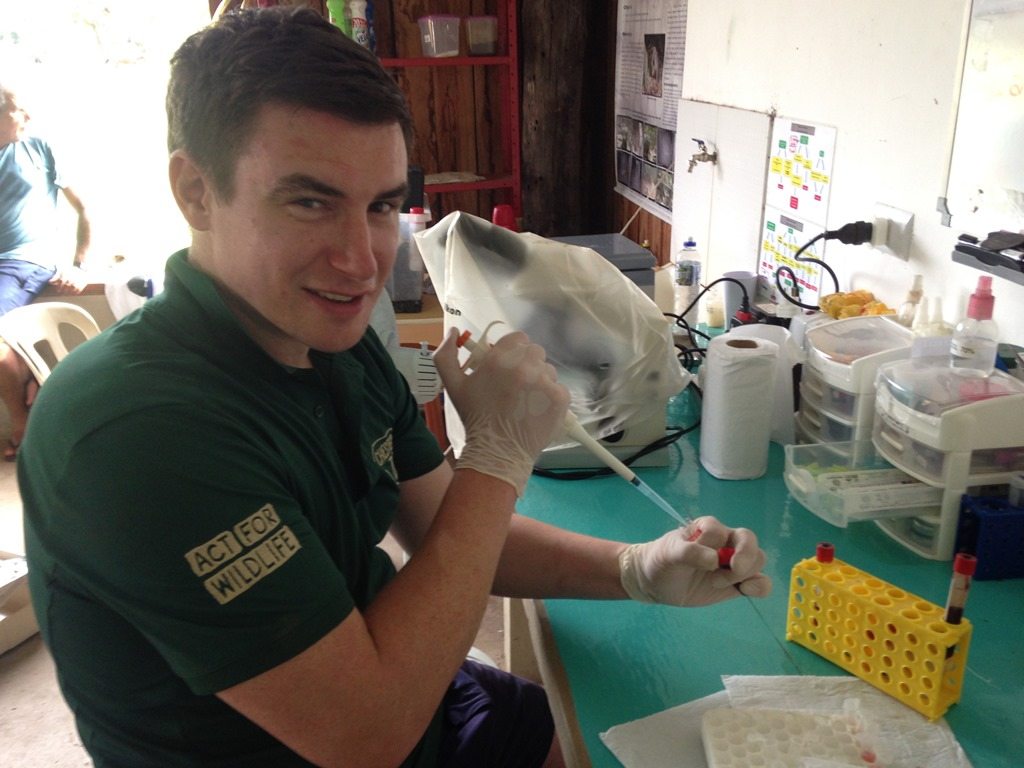“The Pantanal is the world’s largest wetland and, at its peak, is thought to cover an area the size of Greece! The region is a haven for wildlife lovers and I was thrilled to wake up on my first morning to the sound of wild hyacinth macaws squabbling with each other outside. The Lowland Tapir Conservation Initiative (LTCI) is studying tapirs across different habitats within Brazil.

“Over 95% of the Pantanal is privately owned and mostly used as agricultural land for cattle-ranching yet the study site is considered to be pristine tapir habitat. In contrast, the huge grassland expanse, known as the Cerrado, which covers most of southern Brazil, is being heavily targeted for human development. By comparing population trends and identifying threats to tapirs in different areas, the LTCI is able to work with stakeholders in order to help mitigate risks to them.
“During my time in the Pantanal, I helped the LTCI with its ongoing studies into the social and spatial ecology of lowland tapirs. Each morning, after a breakfast of milk and liver covered with breadcrumbs, we would head out and check each of the sixteen box-traps set throughout the 100km2 study area. The tapirs that we caught were anaesthetised in order to perform a full health examination and collect biological samples such as blood, body tissues and parasites. Certain individuals were also fitted with a radio-collar and, alongside the use of camera traps, we were able to monitor the movements of several animals. The LTCI has been collecting information on wild tapirs for over 20 years and this huge amount of data is helping to determine biological parameters such as the time interval between births, infant mortality rates and fertility rates within the population. This information is needed in order to determine how sustainable a population is likely to be.
Daytime temperatures were regularly above 40°C, making it hard and tiring work but, having worked with several lowland tapirs at the zoo, it was a wonderful and humbling experience to get hands-on with those in the wild.
“My afternoons and evenings were then spent working alongside members of The Giant Armadillo Project. Very little information is known about these labrador-size, prehistoric-looking creatures but studies suggest that their wild population has reduced by 30-50% over the past 30 years. The Giant Armadillo Project is helping to discover more information about the ecology of this rare and elusive species in order to help identify and reduce the threats to it.
“Each day, as the sun started to disappear over the horizon, the team and I would head out on the back of a 4×4 truck, using radio-telemetry to locate previously identified armadillos. If an unknown armadillo was found, we would carefully capture and anaesthetise it in order to perform a full health examination, collect biological samples and place a radio-transmitter and GPS device. Such information and observations have shown that male armadillos may have home ranges of up to 40km2 and that the burrows they dig can be used by over fifty different species of mammals, birds and reptiles. The discovery that giant armadillos are such important ‘ecological engineers’ means that by preserving them in an area, several other species will also benefit and hopefully thrive.

“Having wanted to visit the Pantanal since I was a young boy, it was a huge privilege and a dream come true to see the amazing work being carried out by both projects and to appreciate how Chester Zoo is helping to Act for Wildlife around the world. As well as tapirs and armadillos, I was fortunate to have encounters with wild giant anteaters, caiman and capybara plus so much more! It was a truly wonderful experience which I will remember forever.”